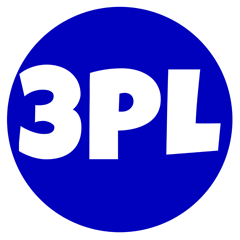This works for all businesses! If you’re in Marketing, consulting, or coaching, this applies even more to your field!
What Got you Off the Island is Not What this is Keeps You Growing Hack
Ryan Holiday What shifts you have to make as an entrepreneur when you scale:
The best way I can describe it is a baseball analogy. In the Dominican Republic, there is a saying in the baseball league that you can’t walk off the island, which means you have to hit your way off in the baseball league. The players that make it off the island are usually some of the best hitters. But once they get into the major league, it becomes different, because it’s about bat discipline and talent is very different. So, what got you there to get off the island is not going to be what allows you to maintain your success because you’re in a whole different league. That is what it’s like when you are scaling your company. What got you there is not going to be exactly what allows you to scale to another level! Be ready to shift and pivot and learn in order to grow!
Not the How, But the Who Hack –
Dan Sullivan:
As you scale, there are going to be all areas in your company that is going to require your attention, from sales to marketing, to operations. So how do you take all of this on and still manage to scale? There’s a great hack for it! It’s called not the how but the who rules! Once you figure out what you need to scale (process, sales, marketing, etc.), don’t ask yourself WHAT do I need to learn? Ask WHO is the best at that and get them on board! This will allow you to scale quickly vs. having to go learn another skillset now vs. staying in the lane where your talents are best served! So, to scale, instead of just figuring out the what, you need to figure out The Who, so you can do it faster!
Be Cautious and Bold Hack –
Mindset for scaling:
you Must exercise your caution in laying out your plans but be bold in carrying them out. A man who is all cautious will never dare to take hold and be successful, and a man who is all bold is merely reckless, and must eventually fail. You must have both the caution and the boldness, to ensure success.
How to Keep from Falling When you’re Experiencing Success Hack
David Metzer:
I think the biggest thing that led to my downfall was losing my values. There are really only a few things I use now to play the top of my game and stay there. Number one gratitude; just being grateful for whatever you have, no matter how big or small. Number two is Empathy for others. As I got into this competitive world, I became an asshole. I was more worried about taking rather than giving that I really didn’t focus on anyone else and I went straight to blame and shame and justification, as I was Midas! Meaning I turned everything into Gold, right? So, it had to be everyone else’s fault. Number three is accountability. There are two parts to this one: what was as my part that the thing that went wrong, and what lesson did I learn so I don’t go thru this again. The fourth is effective communication. What I mean by that is not just being a team leader and effectively communicating with everyone on your team on what you want and how to run a company. Rather, what I mean is that I had lost my ability to effectively communicate what inspired me! When I was making money and I got done with spending it, it took me a while to learn that I need to give back and be of service. I wish I would’ve done it when I had the money instead of having to lose it and build it back up again. But that’s part of lesson learning that I have here, so I can inspire others so they can avoid the same mistakes.






















